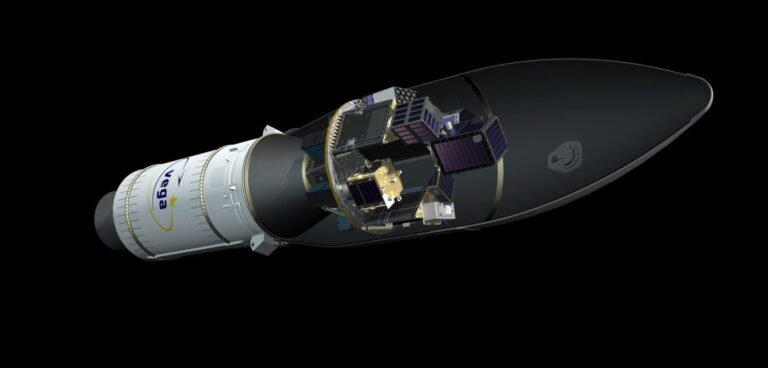Earlier this week, the European Space Agency (ESA) launched 42 small satellites aboard a Vega rocket from a launch site in French Guiana. One of the nanosatellites, PICASSO, carries remote sensing technology developed and built by VTT Technical Research Centre of Finland, which will be used to undertake measurements in the upper layers of Earth’s atmosphere.
PICASSO stands for Pico-Satellite for Atmospheric and Space Science Observations, and is the first CubeSat nanosatellite mission of the Royal Belgian Institute for Space Aeronomy (BIRA-IASB). Weighing only 3.5kg, it carries two measuring instruments for atmospheric research. The first is a Visible Spectral Imager for Occultation and Nightglow (VISION), built by VTT for sun occultation measurements. The company says VISION builds on the capabilities of spectrometers previously launched with the Aalto 1 and Reaktor Hello World nanosatellites. The satellite also carries a system to conduct plasma measurements in the ionosphere, the Sweeping Langmuir Probe (SLP), developed by BIRA-IASB.
VTT says that the instruments on board PICASSO are noteworthy due to their combination of capabilities in a very small package with the company highlighting that the quality of the data collected by these tiny new instruments in relation to their costs enables high-quality scientific research that nanosatellites have not been able to deliver before.
According to VTT, the camera element of the VISION payload can capture the visible light of the sun in freely selectable narrow wavelength bands (430-800nm). When the light of the sun passes through the earth’s atmosphere at different heights at sunset and sunrise, the vertical distribution of ozone in the stratosphere can be measured. At the same time, the system can also determine the temperature profile of the atmosphere by tracking the deformation of the solar image caused by atmospheric refraction.
Antti Näsilä, research team leader at VTT, said, “Integrating atmospheric measurement instruments into a satellite the size of a carton of milk is challenging – but the scientific opportunities are massive. In future, instruments like VISION can also be used to measure other gases, such as carbon dioxide and methane.”



